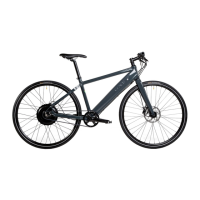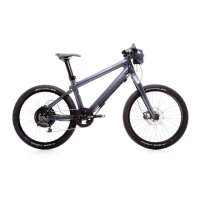What to do if the gears on my Grace Bicycle shift from second to first gear by themselves?
- RRichard GarrettSep 4, 2025
If the gears are shifting from second to first gear on their own, the shift cable is likely too slack. Increase the tension of the shift cable on the shifter. If the problem continues, consult a specialist dealer.


